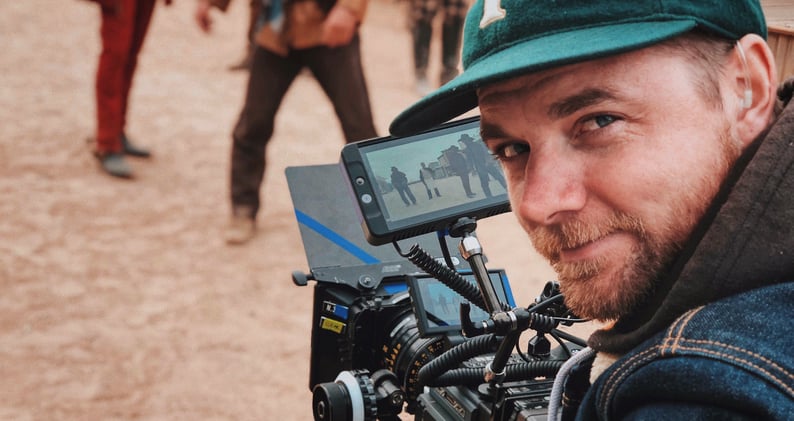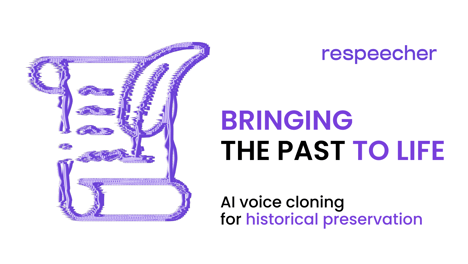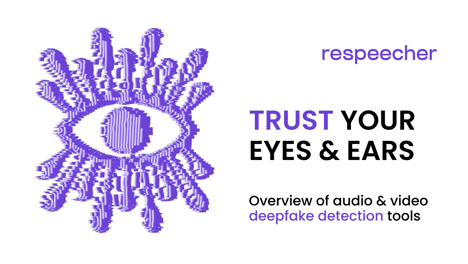6 Challenges for Voicing Video Commercials and How to Fix Them With AI

The success of video commercials is measured in two areas. First, the money that the ad will deliver. Second, the cost of its production. This article will examine how revolutionary AI voice cloning, coupled with AI generated content, helps to improve the former and reduce the latter.
The state of the consumer market and ad industry
Outdoor and TV advertising for 2020-21 is going through hard times. People tied to their homes are giving more attention to streaming services, computer games, and the internet.
According to TechCrunch, more than 6 million U.S. families have dropped their TV subscriptions in 2020, with TV ad spending falling by 15%.
In addition, Americans consumed $791b-worth of goods in 2020 on e-commerce platforms. That's 32.4% higher compared to 2019.
Those numbers signal massive consumer leaning towards an internet-based economy and content consumption. Strategic video commercial advertising on the internet is different from advertising on television.
First, marketers have almost unlimited tools for accurately assessing a campaign’s performance.
Accurate and fast analytics allows them to test dozens of advertising campaigns on limited audience segments where, at best, one campaign was previously tested.
The higher-performing campaigns need to be able to scale quickly. And it's not just about producing one type of commercial, but also launching winning content on international markets.
In addition to the opportunities presented by the online advertising market, there are also objective limitations associated with the pandemic.
For example, advertising content production was put on hold due to the wave of lockdowns that swept across the globe. Agencies couldn't create great ads during lockdowns, and now they can't because leading stars and professional actors are overbooked.
Before we talk about the role of AI in advertising, let's take a look at how to make a video commercial.
7 steps to video commercial production
- Video commercial script. Everything is simple here - the best creatives form the plot and write the script. Scripts usually include storyboards but can be written without them too.
- Casting. You’ll need to cast actors for the video or the dubbing in case they are audio commercials.
- Securing location. A suitable location is just as important as the right actors. First, you have to locate it and then organize everything so that the site is at your complete disposal on the day of the shooting. At this stage, you prepare the location and any necessary acting props with background sets.
- Shooting. Well, there is nothing to comment on. You must have a director, camera, script, and actors.
- Video editing. The post-production stage involves video editors bringing all the footage together according to the script and editor's comments.
- Audio editing. Sometimes, work on the audio lines commences even before the video editing. If the ad requires a voice-over, the sound editor records the narration and passes it to the video editor to match the video with the text. Additional dialogue replacement (ADR) is another vital part of audio post-production. Usually, it requires a great deal of time and effort.
- Final review. This is the last opportunity to check everything before launching.
How AI voice cloning software changes the game for video advertising
AI voice synthesis is a relatively new technology. It became possible because of the rise of synthetic media. Exploring topics related to voice cloning software can provide valuable insights into the advancements in this field. We have extensively covered AI speech synthesis on this blog and we recommend reading these articles to better understand the subject:
- The Impact of Deepfake Technology on Digital Marketing and Advertising
- Applying Machine Learning Technologies to Dubbing and Localization
- Four of the Most Common Synthetic Speech Problems and How to Solve Them
- Debunking the 4 Most Common Voice Synthesis Myths
If you're looking for examples of AI voice cloning, find below a brief list:
- Respeecher synthesized a younger Luke Skywalker's voice for Disney+'s The Mandalorian
- Manuel Rivera Morales' Voice Re-created by AI for the Olympic Games
- How Respeecher Took Part in Creating a Digital Vince Lombardi for Super Bowl LV
Now that you have an idea of how the voice AI technology works, let's look at its benefits for creating video commercials.
1. Create brand-unique voices from scratch
AI voice generators like Respecheer not only allow for cloning the voice of existing actors but also for creating a unique voice.
Why? Creating a unique voice can be useful if you're making long-term audio branding and don't want to deal with real actors or celebrities. It's more affordable and you license this voice forever, meaning that even in 50 years, your brand voice will still sound the same.
2. Create voice-overs with voices that are not available in the studio
This is perhaps the most crucial advantage of speech cloning technology. Anyone can provide an hour-long recording of their voice. If the quality of the recording is good, this will be enough to synthesize an unlimited amount of speech.
This also applies to the recreating of voices that belong to people who are no longer with us - celebrities and historical icons. This allows us to again hear the beloved or terrifying voices of the past.
3. Scale celebrity voices
If you've worked with celebrities, you know how busy they can be. Finding a free hour in their schedule is almost impossible. And luring a star to ADR post-production can be as tricky as signing the initial contract.
Plus, not all celebrities are great actors and role readers. The most famous soccer player you choose to represent you is not necessarily the best actor.
In this case, voice cloning is one of the easiest ways to achieve the best acting result. You can transform the voice of a professional voice actor into the voice of a star without anyone noticing.
We often encounter challenges when working with old recordings because some of them suffer from quality issues of all kinds. But thanks to constant improvements to our AI algorithms, our AI celebrity voice generator deals with all the challenges and deliver the highest resolution audio across the board. You can find out more by downloading this whitepaper about Respeecher's audio super-resolution algorithm.
4. De-aging voices
Everything is simple here. You saw a younger Robert De Niro in the Irishman. Now you want young De Niro to star in your ad. But in addition to getting him to appear, you also need to rejuvenate his voice.
Yes, yes, we can do it. With our AI celebrity voice generator, we can seamlessly replicate the voice of a younger Robert De Niro, ensuring authenticity and consistency in your advertisement. It makes no difference whether we clone the voice of one person using the voice of another, or the same person acts both as the source and the target voice. All we need is a good-quality recording of the young actor's voice. You can read more about how the de-aging in the voice cloning process works on the Respeecher FAQ page.
5. Cloning children’s voices
It's no secret that children are often used in advertisements. And although we really love to watch children on the screen, working with children in the studio can require a lot of time and nerves.
Especially when it comes to ADR, where the roles need to be voiced and match the emotions and timing on the screen.
For Respeecher, it is enough for a child to be recorded in the studio once, and then a professional adult voice actor can voice their role on the screen. This streamlines the production process and ensures consistent and high-quality results.
6. Foreign language localization
This feature is all about scaling ad production and expanding your presence in regional markets.
Imagine you are shooting a commercial with a celebrity. You want to launch it in Asia, but the dubbing destroys the character's act. What to do? Clone the voice, of course!
Respeecher's voice synthesis software can clone the voice of your English (or any other language)-speaking celebrity in any other language. No limits.
The only thing that is needed is a native speaker who will act as the source voice that will then be converted to the target celebrity's voice. This is how De Niro can not only become younger but speak fluent Chinese.
Beyond video ads, audio is the new black.
With the popular rise of podcasts, audiobooks, voice assistants, and chatbots, the importance of audio ads has grown significantly.
A whole new line of marketing has recently grown around the emerging audio content market. Synthetic voices and voice cloning are, without exaggeration, essential technologies for the audio advertising market. And the reasons for this haven’t changed:
- Easy production scaling
- Easy and affordable multi-language dubbing
- Fast post-production
- Easy work management with celebrities
If you work in advertising, we are sure this article caught your attention. And if so, next time before starting a new project, please consult with us for how you can best apply voice cloning.
Contact us to learn more about technology, get rough estimates for your project, or simply share ideas for your future ads.
FAQ
AI voice cloning uses AI voice generation and synthetic media to replicate a person’s voice by training on their speech data. It creates realistic speech through voice synthesis, enabling unlimited voice recordings without needing the original speaker present.
AI voice cloning helps in video advertising by offering faster production, cost savings, and scalability. It enables the use of voice synthesis for unique voice creation, celebrity voices, and accurate voiceovers without the need for time-consuming recording sessions.
Yes, AI voice cloning can replicate celebrity voices or historical figures. Using synthetic media and speech-to-speech technology, AI can recreate voices of deceased individuals or well-known figures, ensuring accurate performance in commercials or media projects.
AI voice cloning can clone voices in multiple languages for video advertising, ensuring that the tone and emotions remain consistent across regions. It allows for multilingual localization without requiring voice actors for every language, streamlining global ad campaigns.
Using AI voice synthesis for ads can significantly reduce costs by eliminating the need for costly voice actors and extensive studio time. Voice cloning technology also enables quicker iterations, reducing production delays and allowing for scalable, efficient ad creation.
AI voice cloning is suitable for both small businesses and large studios. It provides cost-effective solutions for creating high-quality voiceovers and ads, giving smaller companies access to professional-grade synthetic media without the high costs of traditional voice talent.
Ethical voice cloning involves ensuring proper consent from the original voice owner and avoiding unauthorized use. It is essential to protect individuals' rights, maintain authenticity, and avoid misusing AI voice generation for deceptive or harmful purposes.
Respeecher ensures high-quality audio by utilizing advanced algorithms for voice cloning, AI voice generation, and synthetic media. Their technology also includes audio super-resolution to improve audio clarity and fidelity, delivering professional-grade voice clones.
Creating a voice clone involves collecting a high-quality voice sample, training AI voice generation models, and using voice synthesis to produce the desired voice. The cloned voice is then integrated into the commercial for accurate and consistent delivery, ensuring it matches the brand’s tone.
Industries like video advertising, film production, gaming, and synthetic media benefit greatly from AI voice synthesis. It allows them to create scalable, cost-effective voiceovers, replicate celebrity voices, and localize content for global audiences.
Glossary
AI Voice Cloning
Synthetic Media
Voice Synthesis
Audio Post-Production
Multilingual Dubbing
AI-Generated Content

- voice synthesis
- voice cloning
- voice conversion
- synthetic media
- AI voice synthesis
- synthetic speech
- additional dialogue recording
- de-aging technology
- artificial intelligence (AI)
- synthetic voice
- ad campaigns
- advertising
- voice cloning technology,
- speech synthesis
- audio content production
- voice marketing
- audio branding
- video commercials
- AI generated voice
- Respeecher for Business
- Marketing and Advertising
- AI voice cloning software
- voice ai
- voice cloning for advertising
- AI celebrity voice generator





